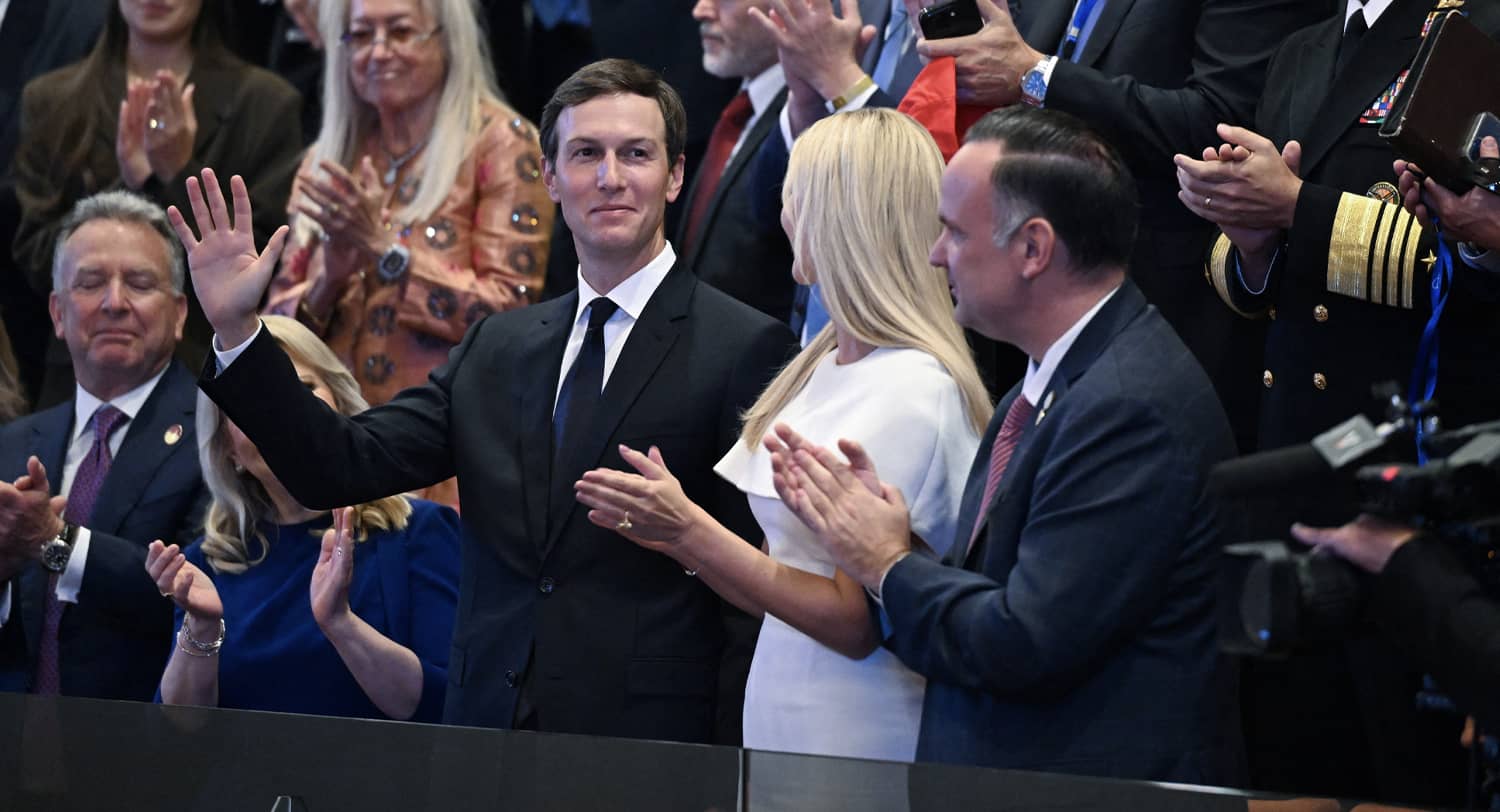There are moments in history when quiet determination achieves more than thunderous rhetoric. Jared Kushner belongs to that rare category of individuals whose influence stems not from spectacle, but from substance, not from noise, but from an unyielding calm that conceals immense strategic power.
Kushner’s ambition is of a particular kind—disciplined, understated, and oriented toward results rather than applause. He carries himself with quiet confidence, rarely loud but always thoughtful. He prefers to act behind the scenes, yet the imprint of his judgment is visible in the most consequential decisions of recent years.
In an era where many seek the spotlight, he has chosen to illuminate others. His demeanor—measured, analytical, and almost meditative—reflects a rare understanding: true influence is not shouted, it is earned through clarity, composure, and endurance.
This self-presentation is not accidental. It reflects an inner philosophy built on humility and long-term vision. Kushner does not chase headlines; he builds legacies.
To understand Jared Kushner, one must look beyond his political or business achievements and into the moral architecture that shaped him.
His family’s story is a chronicle of survival and rebuilding. His grandparents survived the Holocaust, carrying with them the indelible lesson that adversity is never the end, it is the beginning of renewal. His father, too, faced difficult challenges and rebuilt his life with strength and dignity. From those experiences, Jared inherited a conviction that setbacks are temporary, that character, not circumstance, defines destiny.
Raised in a business-driven household with high expectations, he learned early the virtues of discipline, calculation, and adaptability. His academic excellence, Harvard and NYU, gave him theoretical mastery, but his true education came in the markets, the media, and the corridors of power, where pressure reveals authenticity. Each crisis he has faced, personal, financial, or political, became a crucible that forged resilience. Where others saw walls, he saw doorways. Where others lost faith, he found purpose.
The Strategic Mind Behind Peace
Kushner’s intelligence is not merely intellectual; it is strategic, integrative, and deeply human. He sees connections where others see contradictions.
That was evident when he quietly, patiently, and courageously steered the historic Abraham Accords – an act of diplomacy that defied decades of cynicism and division. He crossed barriers once thought immovable, speaking to leaders in the language of respect rather than ideology. Each clause, each handshake, each gesture was crafted through persistence and empathy.
His approach to negotiation was simple yet profound: listen deeply, act firmly, and honor the dignity of all parties. It was not the diplomacy of slogans, it was the diplomacy of endurance, built point by point, detail by detail, until a new chapter of coexistence emerged.
Courage in the Face of Crisis
In moments of conflict, Kushner displayed a rare blend of firmness and humanity. We remember his words in Tel Aviv, on the eve of the hostages’ release, a moment that will remain etched in memory.
Standing before thousands, his eyes wet with emotion, he spoke not as a politician, but as a man of conscience, extending reassurance to the grieving and the hopeful alike. It was an address that combined empathy with resolve, a reflection of a man who knows that leadership without compassion is hollow.
In his private meetings with adversaries, he was unwavering: Disarm and live, or embrace your end. This was not a threat, but a moral boundary, a declaration that the era of radical violence must close.
He convinced all stakeholders through clarity of purpose and moral conviction, culminating in the historic summit in Sharm el-Sheikh, where signatures transformed vision into reality.
From Vision to Construction: The Builder of Peace
We will remember the historic visit of President Donald Trump to Israel and later to Sharm el-Sheikh, where a new page of peace was turned. Behind the grandeur of the moment, Jared Kushner worked with humility and precision, preparing every detail of that encounter.
He built bridges of trust, drafted the frameworks, and created an atmosphere in which peace could breathe.
Yes, there were others who contributed – men of conviction and experience such as Steve Witkoff, and Secretary of State Marco Rubio – but the touch of Jared was singular and decisive. His patience, his ability to inspire confidence, and his moral clarity transformed diplomacy into something deeply human and enduring.
When President Trump was the peacemaker, Jared Kushner was the peace builder. One envisioned, the other constructed. One opened the door, the other built the bridge.
Together, they defied decades of fatalism and reminded the world that leadership, when grounded in conviction and courage, can still change the course of history.
Kushner’s journey reveals that true power lies in composure, not aggression; in vision, not vanity. He represents a model of leadership rooted in intellect, faith, and quiet moral confidence. His resilience is not a product of privilege; it is an inheritance of struggle, discipline, and belief in renewal.
In an age of division and noise, Jared Kushner reminds us that greatness does not always arrive with fanfare. Sometimes it comes softly, measured in patience, in purpose, in the ability to listen when others shout.

